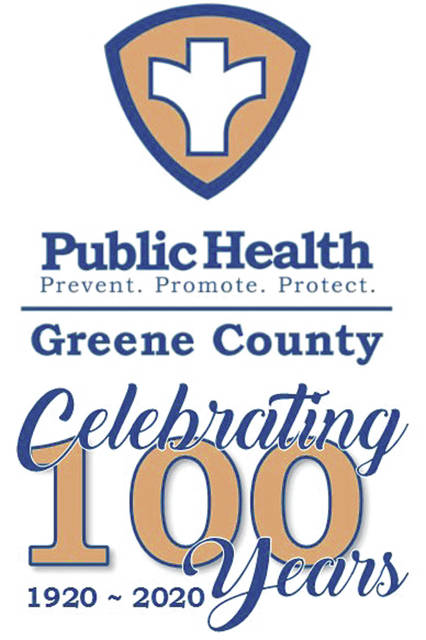

Editor’s note: This is Part IV of this month’s Centennial Celebration series covering Greene County Public Health in the 1980s.
The board approved the Haemophilus influenzae b (Hib) vaccination program. Before the introduction of effective vaccines, H. influenzae serotype b (Hib) was the cause of more than 95 percent of cases of invasive H. influenzae disease among children younger than 5-years-old. Hib was the leading cause of bacterial meningitis in the United States among children younger than 5-years-old and a major cause of other life-threatening invasive bacterial diseases in this age group. Approximately 4 percent of all cases were fatal.
Since the 1980s, resurgence of this disease and other vaccine preventable diseases have occurred. The Healthy People 2020 goal was for 90 percent of all children to be vaccinated against Hib, but in Ohio the rate was 76.7 percent in 2017 and 80.7 percent nationally. The vaccine is 95 percent effective in helping children develop protective antibodies. Some parents delay or decline vaccine or follow alternative schedules because of medical, religious, philosophical or socio-economic reasons. Some vaccine series are incomplete, or immunity wanes, and some cases of disease have been “imported.” Some parents fear side-effects or at one time believed vaccines contributed to the development of autism. Language barriers and insufficient knowledge also contribute to vaccine coverage rates.
The first HIV grant was applied for in 1988 for $30,000 to provide HIV education to the community. The first evidence of a program for car seat safety program was the Kids in Safety Seats introduced by the Medical Director in June 1982. The first Child and Family Health Services grant was submitted in January 1984 to support prenatal and well child clinics. A grant writer was hired to write the grant. In 1986, the department conducted a pilot project through grant funding to determine cause the effect of smokeless tobacco on disadvantaged youth. The district passed a no-smoking policy for employees, they implemented a program to help employees quit and education was provided to children in the community called “Smoking is yukky.”
In July 1980, the Home Care Services Board voted to discontinue its contract with the health district and did end their contract in December 1981. Home Care received one-quarter of their funding from the health district or $100,000. In 1979, 617 residents received 12,291 home visits. Thirty-two of the 73 health district employees were serving in home care. At the time, the health district was reorganizing, and personnel changes were not reviewed by the Home Care Services Board. The alcoholism division, housed at Greenewood Manor, closed in August 1981 due to lack of work and lack of funds. In 1980, childbirth education classes and carbon monoxide testing were discontinued due to funding and the dental clinic closed but received a grant to re-open in January 1982.
Primary care for indigent residents was adopted and volunteer services were provided by the Greene County Medical Society. It was difficult to get physicians to assist with cesarean births at Greene Memorial Hospital for prenatal clients of the health district. Many clients were unable to pay for the service. Both Greene and Montgomery County studied the scope of the issue.
A blood lead machine was purchased for the well child clinic to test for lead in the blood of children. Lead intoxication effects many metabolic processes in the body. An infant or child can absorb more lead than an adult. Lead can damage the brain and nervous system, can cause behavior and hearing problems and children can develop anemia. Pediatricians play a key role in teaching parents how to prevent lead poisoning in children. Today community water systems, regulated by the Ohio Environmental Protection Agency submit maps to show where potential contamination can occur from lead pipes. Ohio has 1,878 public water supply systems. All of the maps are available to the public at epa.ohio.gov.
Next month in August, we’ll visit public health events and activities from the 1990s. Please remember during this difficult time of the COVID-19 pandemic to follow our new page on our website at healthalert.gcph.info/COVID19, along with our social media platforms including Facebook, Twitter, Instagram and LinkedIn for the most accurate and up to date information. You can also visit www.coronavirus.ohio.gov, or call 1-833-4-ASK-ODH.



